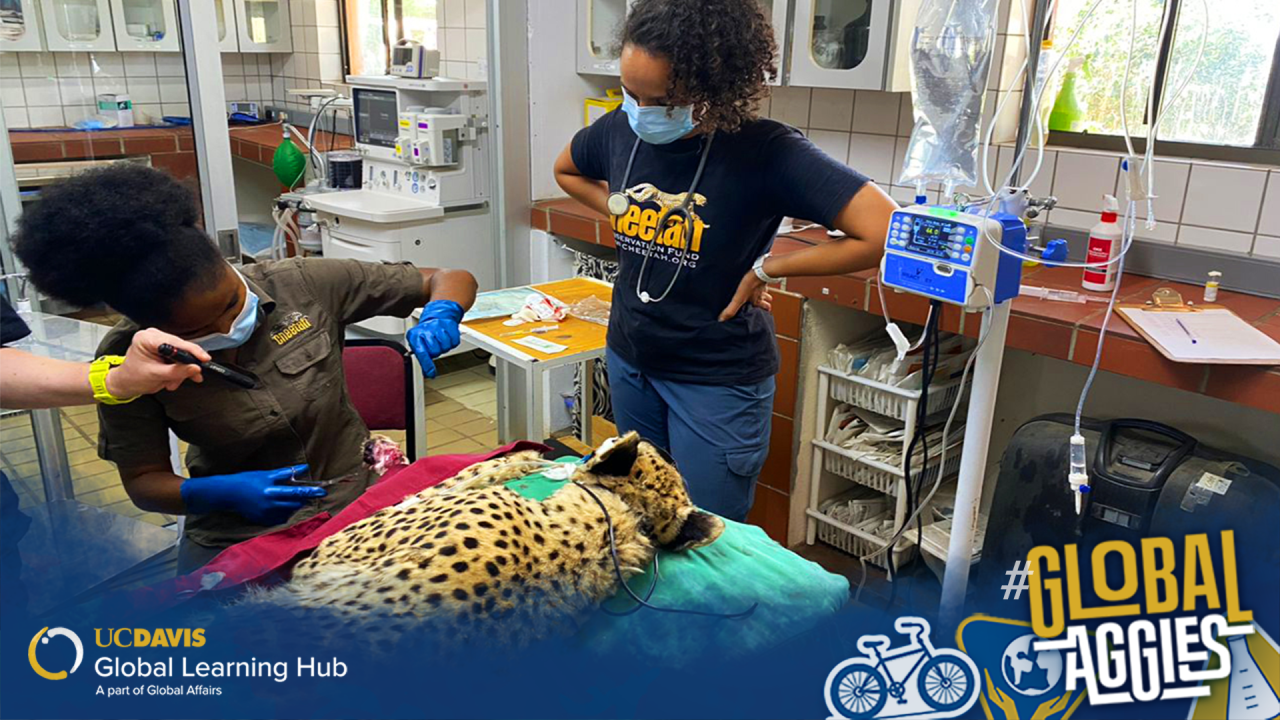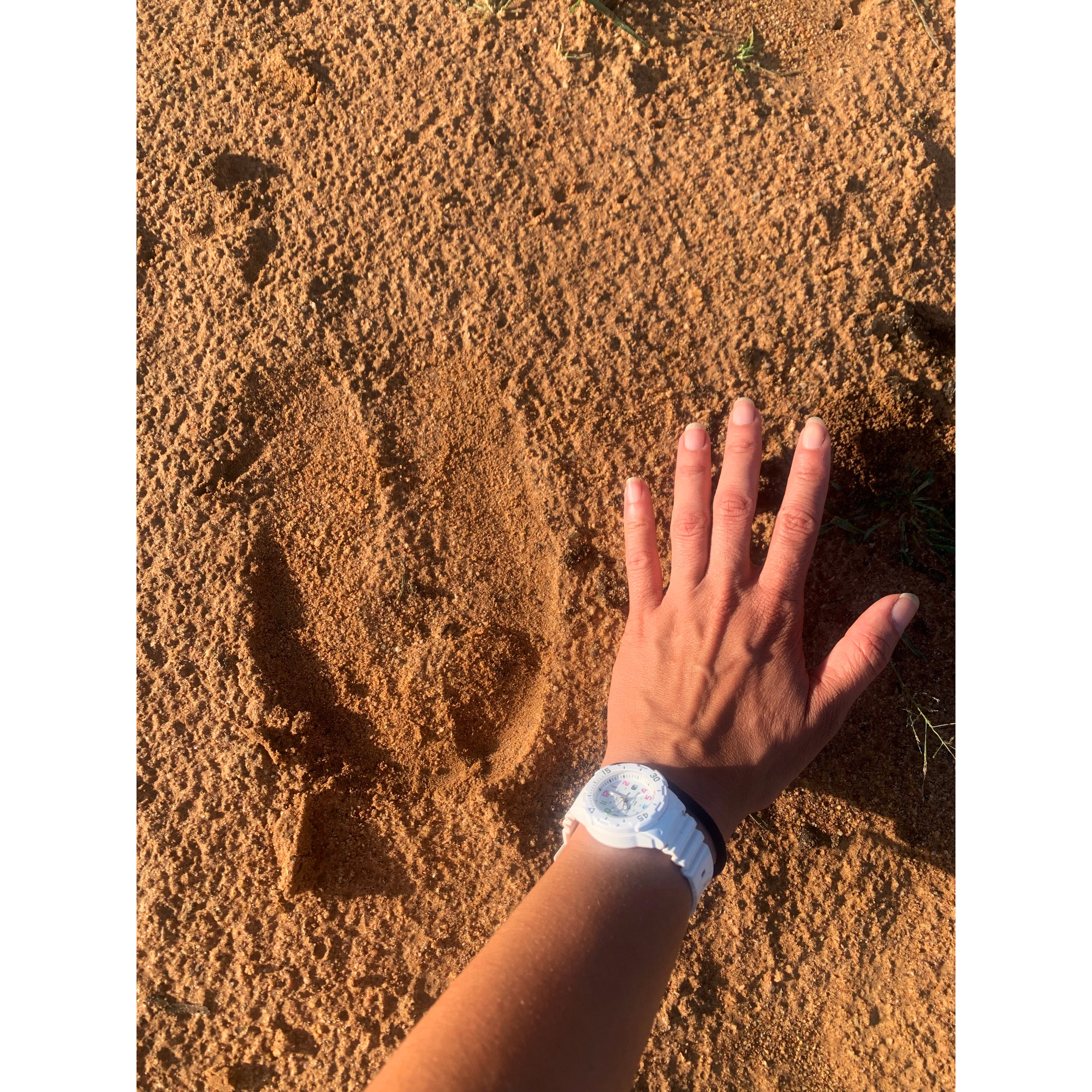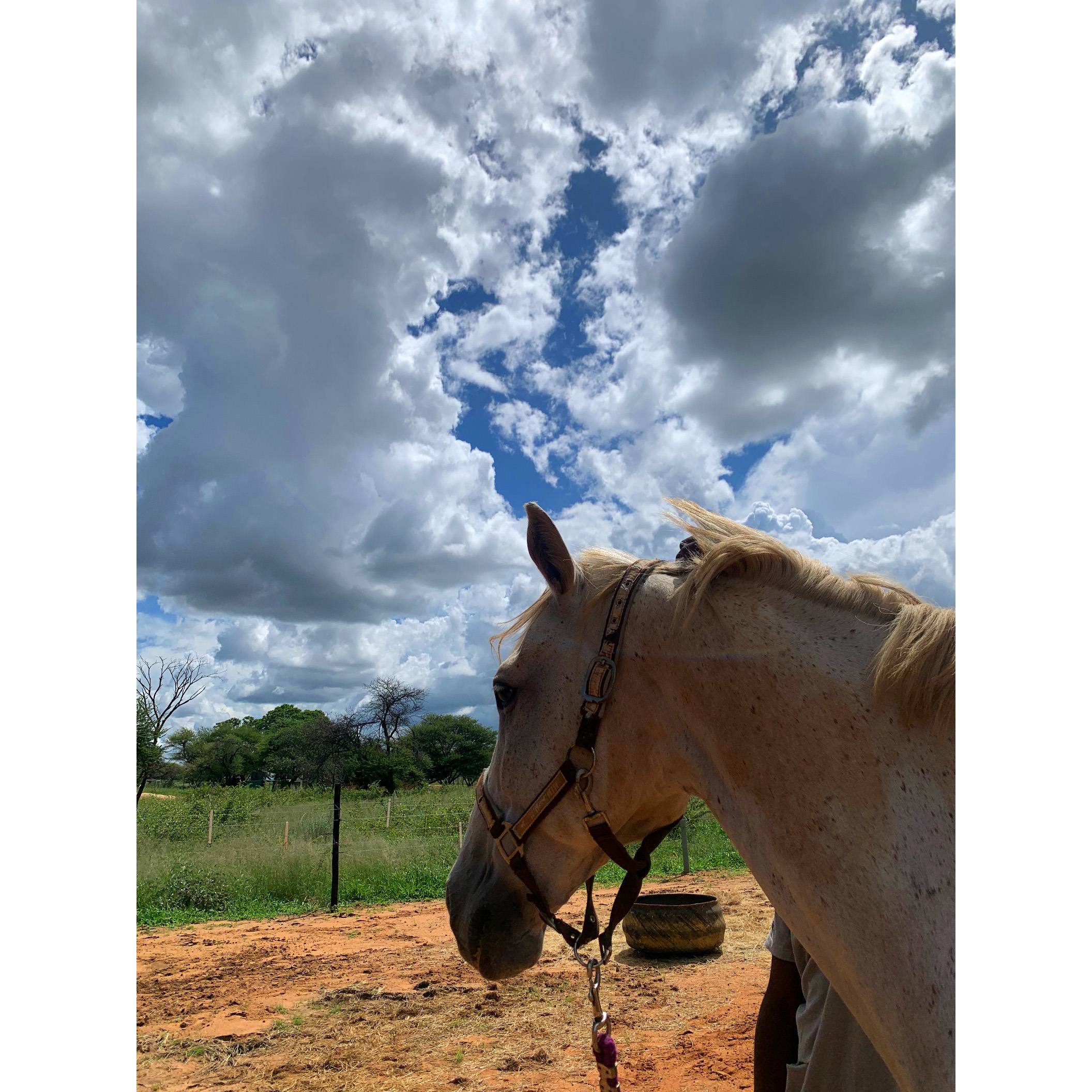
Beyond Vet School: A One Health Approach to Cheetah Conservation in Namibia
Name
Ruth Goins
Major/Field of Study
Veterinary Medicine
Graduation Year
2023
Virtual or In-Person
In-Person
Program Title, Location, Duration
Cheetah Conservation Fund Veterinary Internship, Otjiwarongo, Namibia, 4 weeks
What motivated or led you to participate in this program?
I was drawn to the Cheetah Conservation Fund (CCF) because I felt like it encapsulated the purpose of veterinary medicine—it operates at the intersection of human, animal and environmental health to improve all three. The CCF is located outside the Namibian town of Otjiwarongo. The team there works tirelessly to mitigate the effects of habitat loss and wildlife/livestock conflict on the cheetah population—not just in Namibia, but throughout Africa and India. The CCF has a number of "ambassador" cheetahs on site, as well as cheetahs that will be rehabilitated and released into the wild. They breed Anatolian Shepherds as livestock guardian dogs, which means fewer cheetahs are killed by farmers protecting their herds. They also have dairy and meat goat herds used for training, model farming and milk products. The wide scope of the work they perform with help from international interns and employees working alongside local Namibians was incredibly appealing to me both for the opportunity to conduct veterinary and One Health work, but also as someone who loves to explore new cultures.
What was your experience like in this program? What did you learn?

Besides augmenting my veterinary knowledge (especially when it comes to livestock animals), I learned a lot about the various threats to the natural world and its inhabitants. And I learned how a cohesive yet diverse group of people with strongly held convictions can function beautifully towards an end. While the majority of interns were from Namibia, there were many other countries represented: Germany, Canada, the United States, the Netherlands, South Africa, amongst others. It was fun to see people share experiences and stories from their homeland and to compare what daily life is normally like for us. And of course, we were all there working to address the global challenge of cheetah conservation; it was great to be around so many people who had a passion for these big cats like I do.
What was the most challenging part of your program and the most rewarding?
The most challenging part of my internship was the fact that interns came and went so frequently. It meant that every week there was a sort of recalibration of the cultural dynamics. Friend groups formed, disbanded and reformed. The most rewarding aspect of the experience was working with the Namibian veterinarian. Every day we compared what our curriculums at vet school were like, shared stories from school and before, and worked side-by-side to treat whatever came in the clinic. She even shared some of her favorite, and hard to come by, fish curry with me.
What is one of your most memorable experiences from your program?
The most memorable times of the internship were going on night drives. Every week or so, we would take a safari vehicle out onto the reserve at sundown and look for wildlife. Some days we saw a lot—caracals, African wild cats, giraffes, hoofstock, ostriches—and some days we would only see the bugs that were attracted to our spotlights. These were fun for so many reasons: sunsets on the reserve were beautiful; the Milky Way was insanely clear and bright; seeing animals in their natural habitat instead of a zoo was incredibly poignant; and sharing these experiences with my fellow interns made it even more special.
What was a typical day like on your program?
A typical day consisted of waking up to eat breakfast at 7 a.m., then heading to the veterinary clinic. We would take note of which animals needed morning treatments or medication, then take the cart out to the goat herds before they were put to pasture for the day. We would see any goats that needed medical attention before returning to the clinic. Then, it really depended on what needed to be done for the day—spays and neuters, dental procedures, the occasional urgent care issue. Lunch was served from 12-1 p.m. and then we would continue our work until 3 p.m., when we went to check on the goats after they returned from pasture. We would end work at 5 p.m., have free time from 5-7 p.m., eat dinner and then usually go to bed early. We had one day off a week and they could be pooled together to enable trips to other Namibian excursions, like Etosha National Park or Swakopmund.

What advice do you have for someone considering your program or a global experience, in general?
My advice for anyone considering visiting the CCF is to go for as long as you can. Four weeks flew by, and I wish I could have stayed even longer. I would also recommend learning a couple key phrases in Afrikaans, Oshiwambo and Damara languages, as people were incredibly excited when I tried to communicate with them in their native languages. I would also recommend coming a week early so you have time to explore other parts of Namibia. The CCF can be a bit isolated and it was so fun to be able to go to town.
What is something you wish you knew before joining the program?
Although the trip was a great experience, one thing I wish I would have done before going would be to complete the Global Leadership Badge through UC Davis Global Affairs. This is a six-part, self-paced workshop that I am currently taking and it would have been incredibly helpful during my experience. The Global Leadership Badge is designed to generate self-reflection on concepts related to culture, cultural differences, and how our own identifiers influence the way we perceive other cultures and situations. The badge program has allowed me to critically review my own learning and humility, and goes further into how global systems influence how we work with others across different cultural values. I would highly recommend that any student who has a trip planned take this course, but it would be a valuable endeavor for anyone who is interested in broadening their understanding of how they fit into a global culture.
How do you think your program experiences will benefit you in the future?
An experience like I had at CCF will allow me to continue to practice my cultural humility— it was challenging to show up at a smaller clinic like the one at the CCF and to adjust to how medicine is practiced in that specific area. Of course, any clinic I work at will have a different culture and different approaches to medicine, and working at the CCF taught me how to ask questions, seek understanding and proceed in ways that I had not been taught in a didactic setting, but that are entirely appropriate for the location. Personally, I have made connections all over the world of like-minded people, and I cannot wait to visit them and reminisce about our time together.
About the Global Learning Hub at UC Davis
As a part of Global Affairs, the Global Learning Hub aims to inspire global curiosity, understanding, and engagement.
Through the Global Learning Hub, every UC Davis student can find global learning opportunities available on campus, in the region, virtually, and internationally. The Hub offers global learning programs, workshops, and resources that enhance all UC Davis students’ academic and career pursuits through four broad areas of opportunities: Community Engagement; Global Skills and Leadership; Internships and Research; and Study Abroad. UC Davis is committed to preparing the next generation of global problem solvers and change makers. As such, we aim to prepare our undergraduate, graduate, and professional students to solve global challenges collaboratively, equitably, and sustainably.